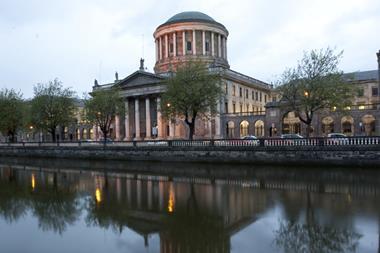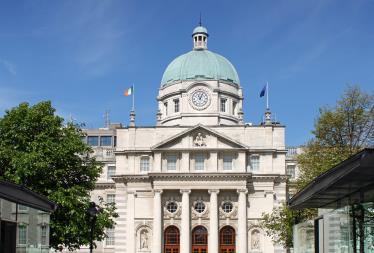The Irish government has said it is “essential” the Ireland Strategic Investment Fund (ISIF) act as an alternative source of financing for a broad range of projects – from agriculture, to construction and technology ventures.
Minister for finance Michael Noonan said he was hopeful Parliament would pass a yet-unpublished bill by “the middle of the year” to formally establish the ISIF, allowing the €6.8bn held within the National Pensions Reserve Fund’s (NPRF) discretionary portfolio to be deployed.
Despite publishing an amendment to existing legislation last summer, the coalition government has yet to pass a full act on the ISIF, meaning the NPRF has so far only been able to commit or invest €1.1bn in domestic projects aimed at boosting Ireland’s recovering economy.
Speaking at a launch event in Dublin Castle yesterday, Noonan confirmed the ISIF would have the dual investment objective of achieving investment return and economic impact.
“I am conscious there is little precedent for sovereign funds globally investing with such a mandate,” he told attendees, “although a number of such funds are beginning to emerge. I believe we are setting up a model that will come to be widely copied.”
Eugene O’Callagham, head of investments at the NPRF, last month told IPE the dual objective would be a “big challenge”.
“The concept of impact investing is emerging, but, for sovereign funds to have both return objectives and to support economic activity is quite a new development,” he said.
Noonan told the conference, aimed at attracting further co-investors to ISIF projects, that the fund would recycle assets for the benefit of future generations.
He also highlighted the need for the ISIF – which, last year, through the NPRF, committed to a suite of funds offering credit and financing to small and medium-sized enterprises (SMEs) in Ireland – to offer financing to a wide range of industries.
“Developing alternative sources of financing for infrastructure projects and business across all sectors of the economy – from agriculture, to construction, to technology – is essential and will complement existing funding source,” he said.
“I would encourage business and their representative bodies here today to examine alternative funding models in place in other jurisdictions and to come forward with plans for investment for the ISIF.”
He also noted that the NPRF had so far “taken an open-minded and flexible approach” to any commitments.
In a statement released ahead of the conference, O’Callaghan said: “The ISIF is open for business and actively looking for investment opportunities that will meet its ‘double bottom line’ criteria of generating commercial returns as well as delivering economic benefits.”
Noonan also highlighted that the government would publish a new infrastructure investment framework in 2015 that would increase the likelihood of public-private partnerships (PPPs) being used as a method for funding infrastructure projects.
“It will be open to the ISIF to invest in PPPs where there is a commercial return,” he said.










.jpg)






No comments yet